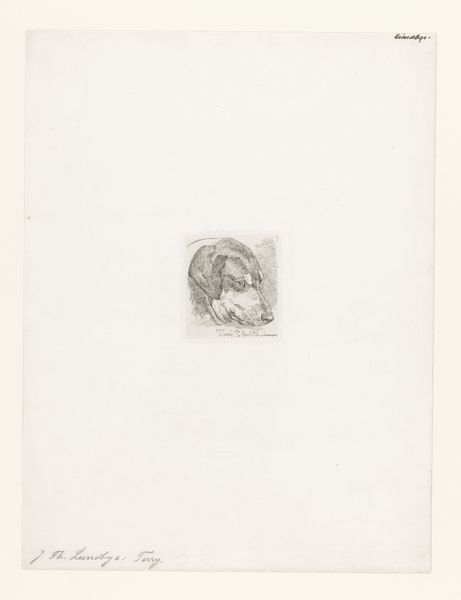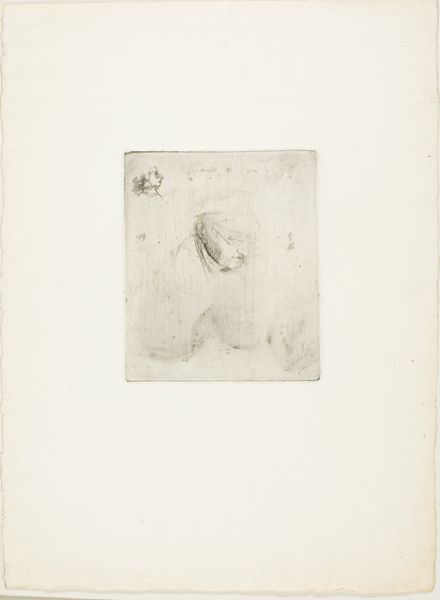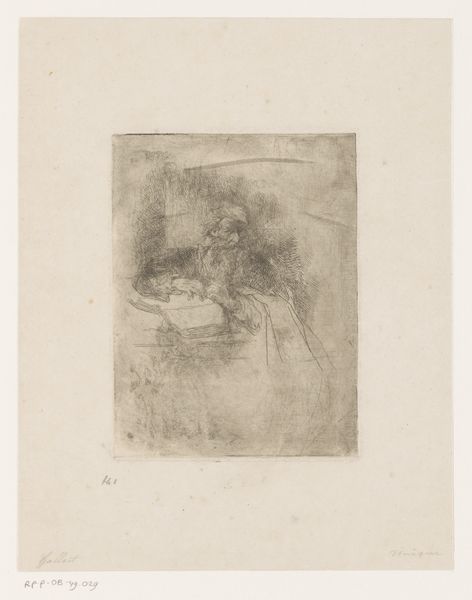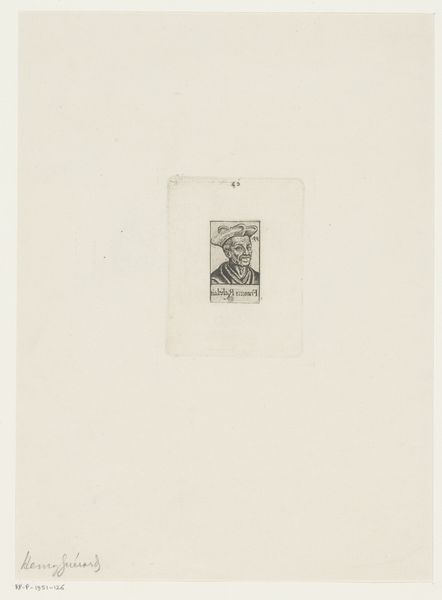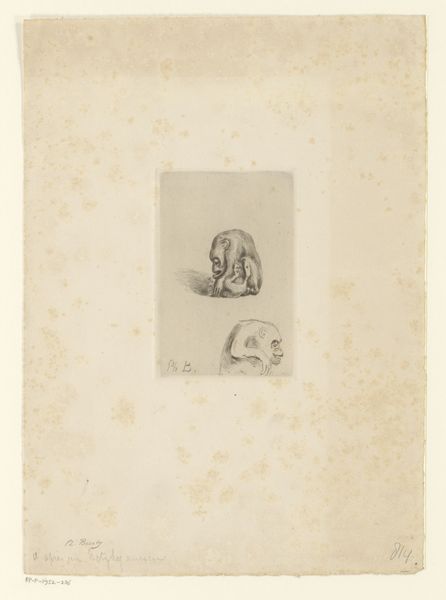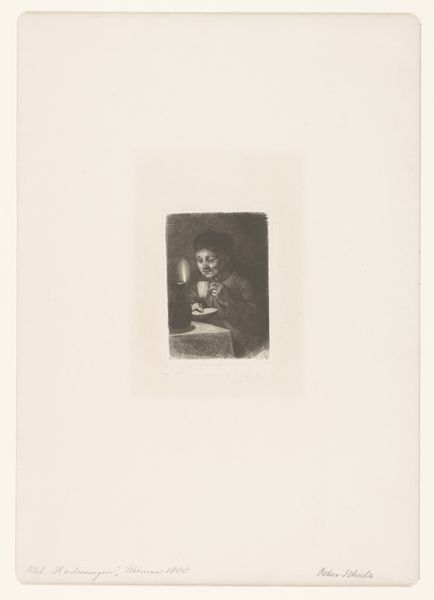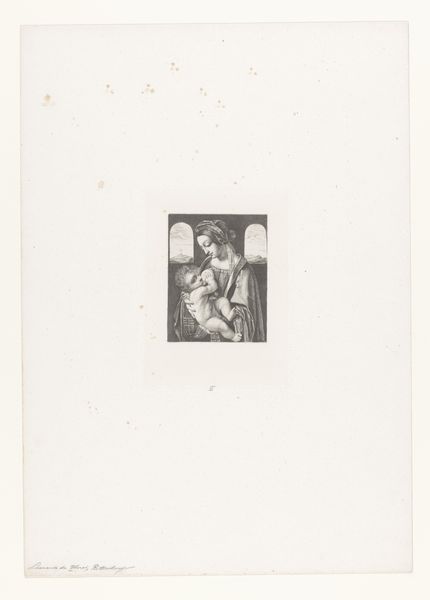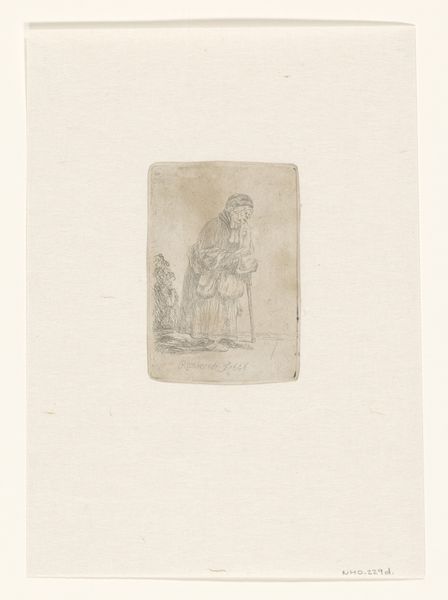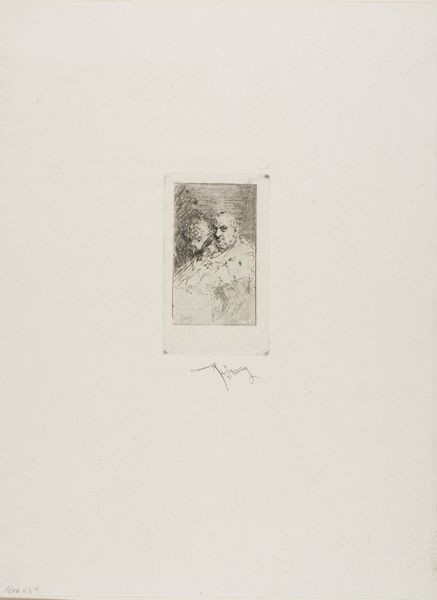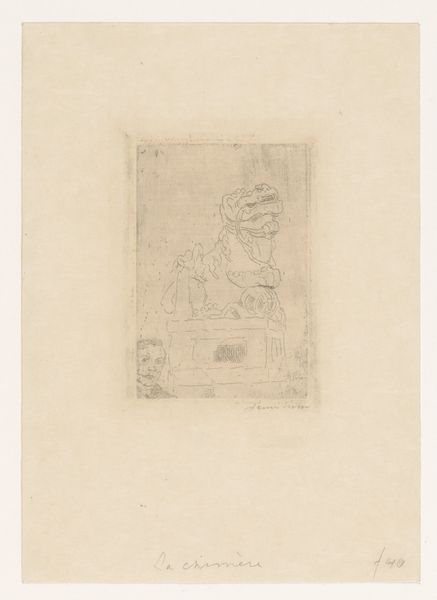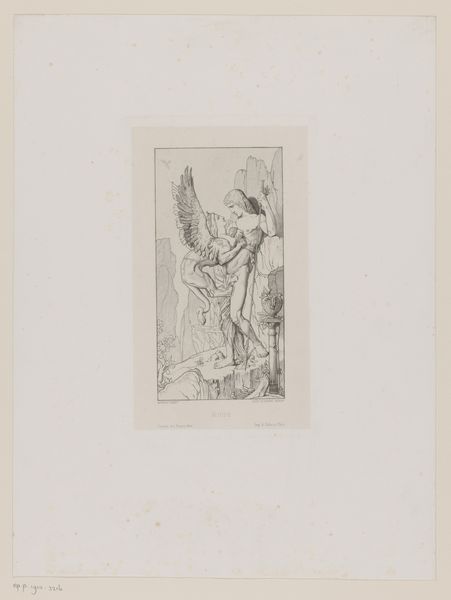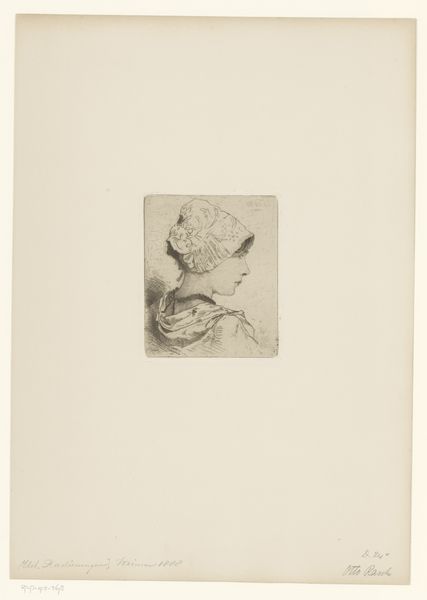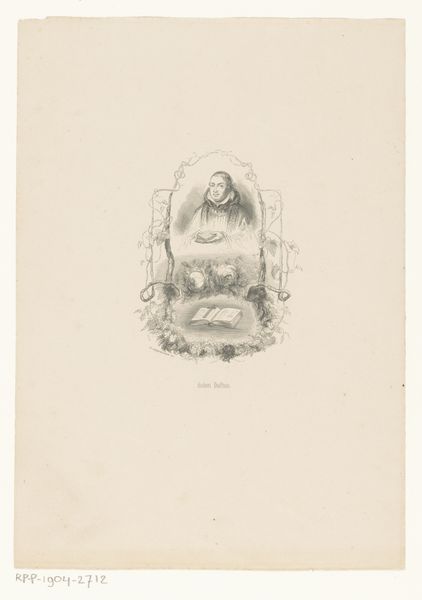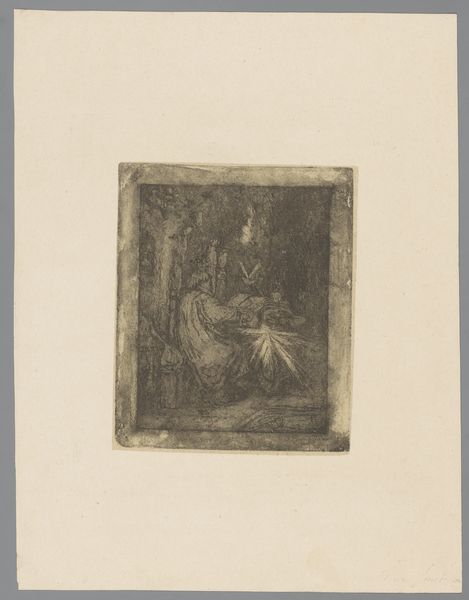
Sheet of studies with the head of the artist, a beggar man, woman and child 1805 - 1844
0:00
0:00
ignacejosephdeclaussin
Rijksmuseum
drawing, print, etching
#
portrait
#
pencil drawn
#
drawing
# print
#
etching
#
pencil sketch
#
sketch
#
academic-art
Dimensions: height 114 mm, width 95 mm
Copyright: Rijks Museum: Open Domain
Ignace-Joseph de Claussin created this small etching, "Sheet of studies with the head of the artist, a beggar man, woman and child", in the first half of the 19th century. The image shows a series of rapidly sketched figures, including the artist himself and a family of beggars. Claussin was working during a period of significant social upheaval in Europe. The French Revolution had challenged traditional hierarchies, and poverty was a widespread concern. We see a growing interest among artists to depict everyday life, including the lives of the poor. But what is the public role of art in the 19th century? Does it serve to reinforce existing social norms, or does it offer a critique of inequality? By studying the artist's sketches and other prints of the period, we can gain a deeper understanding of the social and political context in which they were made. This kind of historical research helps us to understand the power of art to challenge existing social norms.
Comments
No comments
Be the first to comment and join the conversation on the ultimate creative platform.
